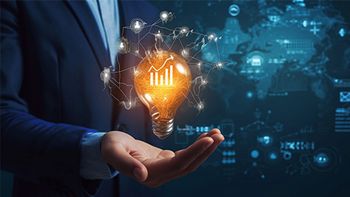
- Pharmaceutical Commerce - April 2023
- Volume 18
- Issue 2
Pediatric Medicine: Challenges Abound
Innovation and investment in advancing lifesaving therapies for pediatric patients to the commercial stage remains a daunting task, but rapid advances today in modeling and simulation are reducing the hurdles for drugmakers.
The development of medications that are safe and effective for children has always faced stiff headwinds, in terms of not only the need to demonstrate drug safety and efficacy in children of varying ages, but the need to establish appropriate, evidence-based dosing and identify potentially life-threatening drug-drug interactions. The reality is that children are not just small adults, as they experience drastic physiological changes throughout childhood—from infants to toddlers, to young children to teenagers. In addition to the mandate of establishing safety and efficacy and developing dosing guidelines, other challenges arise with the need to select the most acceptable dosage forms that are both tolerable to pediatric patients and still able to meet drug bioavailability requirements, while reducing the potential for adverse events and toxicity.
Meanwhile, ethical and operational challenges arise during the clinical trial stage. “Pediatric trials are notoriously difficult to recruit for, as parents are understandably reluctant to enroll their children into intrusive or invasive studies, and there may be a possibility that the child will be randomized into a placebo treatment arm,” says Karen Rowland Yeo, PhD, senior vice president, client and regulatory strategy for the Simcyp division of Certara.
Similarly, the financial opportunities associated with developing pediatric medications are often limited, in part, by relatively small market sizes and the need to investigate, formulate, and commercialize parallel versions of any given drug. For example, when commercializing a therapy for children of different ages, investigators may need to evaluate liquid vs. solid form, tablets vs. capsules, injectable or intravenous options, the use of smaller soft gels, chewables or orally disintegrating tablets, and more, and commercialize several different forms of the same product for different age groups.
Collectively, these considerations create barriers for drug developers, and frustrating gaps for pediatric patients and their families. And too often, this puts a burden on physicians and pharmacists, who have no choice but to prescribe therapies that are approved for adults off-label and use their best judgment to arrive at an appropriate dosing strategy for their pediatric patients.
Into the mouths of babes
While various regulatory and financial incentives (discussed ahead) have helped to spur interest and innovation in the pursuit of medications that are explicitly studied in and approved for use in children, today, roughly 60% of treatment that are prescribed for children are not approved for pediatric use (rather, they are prescribed off-label), and the percentage of FDA-approved medications is even smaller for neonates, with 90% of drugs used in this patient subgroup being prescribed off-label.1,2
Yeo points to off-label prescribing as an integral part of contemporary medicine. She notes that children benefit from drugs that are not approved for use in the label by FDA or other regulatory health authorities, and in many cases, an off-label medicine may provide the best available intervention for a patient, as well as the standard of care for a particular disease. Nonetheless, Yeo adds that the off-label use of any therapy—and reliance on trial-and-error dosing strategies—is particularly challenging when it comes to children, as drug solubility and absorption is impacted by smaller gastric fluid volumes compared to adults, and organ maturation in young patients changes rapidly over time.
Although the majority of off-label clinical decisions are based on the principles of evidence-based medicine, and regional working groups typically put recommendations in place for drugs used off-label, high-quality data are rarely available to support dose extrapolations in children.
“It is not always obvious how important factors change when going from adults to children,” explains Yeo. “Growth, maturation, and environmental factors, along with disease and genetic factors, can affect drug performance in children, especially in those less than two years old.”
Thus, it is never as simple as just scaling down the adult dosage on a linear basis.
“There is no magic formula to convert adult dosages for children, and choosing a dose that is simply being proportional to weight or volume may not be appropriate,” says Christian Frois, partner at Trinity Life Sciences, a provider of global life sciences commercialization solutions. “Too much medicine increases the risk of adverse events, while too little may lead to a lack of clinical efficacy for the patient.”
“This lack of approved labeling and dosing recommendations could also lead to a higher risk of medication dosing errors, adverse events, side effects, drug-drug interactions, or allergic reactions in pediatric patients,” adds Shipra Patel, MD, global therapeutic area section head, endocrinology, and global head, pediatrics for Parexel.
Adding to the complexity of broad off-label use of any medicine is that patients often face bigger affordability challenges, as most payers don’t automatically cover off-label use of approved therapies, notes Jan Nielsen, patient solutions division president for AssistRx. “To help patients overcome this barrier, we help the physician’s office to write letters of medical necessity and apply for compassionate use to encourage payers to cover the drug," she says. "If that fails, we turn to other community resources to help patients and their families address the affordability gap.”
There is, however, one important silver lining to the broad use of off-label prescribing in pediatric medicine.
“Today, there is growing physician [and regulatory] enthusiasm and need for real-world evidence (RWE) and investigator studies to support drug development and the use of the therapy in pediatric populations,” notes Frois.
Specifically, clinical studies that are conducted to obtain real-world data (RWD) and create RWE for therapies that are frequently prescribed off-label for pediatric patients are being used to provide data-driven dosing recommendations for specific pediatric age groups.
“There is a greater appetite for embracing innovative study designs, when applicable, to help reduce patient burden,” says Patel. “These novel approaches include the use of adaptive trial designs, decentralized approaches, and increased development and use of RWE.”
Government and market incentives
Government agencies are keenly aware of the need for more and better pediatric medicines, Yeo points out, and have been attempting to address these gaps through regulatory mandates. In the US, two pivotal regulatory frameworks have been in place for over a decade to encourage and incentivize drug sponsors to develop new pediatric medicines and to pursue pediatric indications for existing medications.
- The Best Pharmaceuticals for Children Act (BPCA): A voluntary program that incentivizes pharmaceutical companies that voluntarily perform pediatric studies by providing the opportunity to gain six months of pediatric market exclusivity.
- The Pediatric Research Equity Act (PREA): A mandatory program that authorizes FDA to require pediatric assessments for certain drugs and biologic products (either at the time of initial drug submission or later), unless the assessment has been deferred or waived.
In August 2020, the Research to Accelerate Cures and Equity (RACE) for Children Act—an amendment to PREA—went into effect. With the RACE for Children Act, FDA is now authorized to require drug sponsors to submit an initial pediatric study plan (PSP) with any original new drug application (NDA) or biologics license application (BLA) oncology product that may target the growth or progression of a pediatric cancer. And, importantly, new cancer therapies with orphan-drug designated indications will no longer be exempt from PREA.
In addition to requiring pediatric drug development, “regulators are also providing guidance as to how the development process may be streamlined,” says Yeo. “Both FDA and [the European Medicines Agency] indicate that pediatric clinical trials should be designed to fill knowledge gaps, and the agencies encourage the use of innovative approaches, including modeling and simulation.”
Since going into effect in 2012, BPCA and PREA have resulted in more than 900 products with specific pediatric use information in their label.3 And in FDA’s latest annual status summary,4 the total number of medications involved in pediatric studies numbered 394 in 2019, 398 in 2020, and 400 in 2021, reflecting steady progress since FDA began compiling such data in 2007. (During that first year, pediatric studies were conducted for 190 products.)
Wraparound programs to support patients and families
Managing any chronic or life-threatening condition is always a challenge, but it is particularly difficult within the realm of pediatric care.
“When families are taking care of a child who is sick, managing the disease and complex medication regimens, and other medical interventions, along with logistical and financial demands, can be overwhelming and scary for parents,” says Nielsen of AssistRx. “Providing thoughtful, comprehensive support is critical to ensure success for both the patient and the drug manufacturer."
Such support, Nielsen continues, could include helping parents investigate all available treatment options to ensure drug affordability; providing nursing support to help parents master drug injection, complex medication protocols, and side effects at home; coordinating transportation; and supporting communication and access via channels such as text messaging.
Further, many specialty drugs have very complex titration requirements. “Our pharmacists support some specialty pediatric products by repackaging and color coding the prescription and clarifying for the child’s family when the medications must be taken with or without food for optimal efficacy,” adds Nielsen. “These specialists will also connect with the physician to alert if the patient is not tolerating the medication, when it’s time to move on to the next titration, and so on.”
When designing a constellation of wraparound services, it is particularly important to embed the elements right into the workflow of the physician’s electronic health record (EHR) systems to break down silos of information and streamline the offerings.
“You can have a great drug, but life gets in the way and emotion gets in the way, particularly when it comes to supporting pediatric patients,” says Nielsen. "The right mix of high-touch and high-tech elements to deliver the right wraparound services—in addition to the drug itself—can help to overcome the types of burdens that undermine affordability and adherence objectives.”
Using in silico methods to predict drug behavior in children
A key challenge in the design and execution of pediatric clinical trials is patient identification and recruitment. Sample sizes are typically small, particularly for studies in children that target rare disease. Also, there are often logistical challenges affecting the motivation of patients and families to participate in clinical trials, resulting in low patient enrollment levels in many cases. “For pediatric clinical trials, the needs of the whole family unit should be considered, not just the needs of the participant,” says Patel of Parexel. As alluded to, such needs could include support to families in the form of transportation assistance, meal vouchers, and other forms of wraparound support.
Patel cites other important factors for trial designers to be on top of in the pediatric space. Those include limiting blood draws for young children or prioritizing certain blood draws over others, and streamlining study designs to include only the most relevant endpoints and procedures that are needed to generate interpretable safety and efficacy data. Reducing the frequency of study visits and/or including some virtual or home visits could also lower overall study burden.
Significant physiological changes occur in children from birth to adolescence, leading to differences in pharmacokinetics (PK; which relates to the absorption, distribution, metabolism, and excretion of drugs in the body) and pharmacodynamics (PD; which relates to a drug’s molecular, biochemical, and physiologic effects). The impact of age and maturation can be simulated using physiologically based pharmacokinetic (PBPK) modeling—in lieu of clinical studies.
Specifically, today’s PBPK models integrate the complex interplay of human physiological parameters with specific drug characteristics, thus providing a mechanistic approach to predict the PK drugs in different patient populations. This approach allows investigators to create virtual pediatric patients by selecting actual physical characteristics that mimic the developmental physiology of children at different ages. Pediatric PBPK models integrate additional information regarding organ development and the pathways involved in the drug disposition. This data can help reduce the sample size of actual patients needed to make meaningful inference from pediatric study data than would be required for more empirical analytical methodologies.
“This may alleviate some of the challenges associated with pediatric trial recruitment and can assure that every study participant receives the study medication and not a placebo,” says Yeo.
A recent paper co-authored by Yeo5 notes that the use of pediatric PBPK modeling increased 33-fold between 2005 and 2020, with most of the effort focused on clinical and drug-development applications.
And the use of such modeling techniques is expected to grow, in part, due to FDA draft guidance published in September 2022,which states that “planning for DDI (drug-drug interaction) evaluations should be included as a section of the initial pediatric study plan under pediatric pharmacokinetic studies and should address the impact of DDIs on drug dosing in specific age groups.”6 The draft guidance also states that “quantitative approaches, such as PBPK analyses, should be explored to address pediatric DDIs during drug development when differences in DDI are expected.”
In the years to come, machine learning and artificial intelligence are also expected to play an increased role in efforts to optimize pediatric drug development and improve trial success.7 The areas such tools, and overall advances in data analytics, are expected to bolster include predicting future clinical complications, improving the analysis of medical images, identifying relevant endpoints and biomarkers in pediatrics, and predicting treatment and placebo responders.
References
1. Allen, H.C.; Garbe, M.C.; Lees, J.; et al. Off-label Medication Use in Children, More Common than We Think: A Systematic Review of Literature. J Okla State Assoc. 2018, 111 (8), 776–783.
2. Tereza, H.; de Lima Costa, M.; Costa, T.X.; et al. Use of Off-label and Unlicensed Medicines in Neonatal Intensive Care. PLoS One. 2018, 13 (9), 1–12.
3. Overview of US Pediatric Regulations. Institute for AdvancedClinical Trials for Children, April 26, 2022,
4. FDA, Pediatric Studies – Annual Status Survey.
5. Johnson T.N.; Small, B.G.; Yeo, KR. Increasing Application of Pediatric Physiologically-based Pharmacokinetic Models Across Academic and Industry Organizations. CPT: Pharmacometrics & Systems Pharmacology. 2022, 11 (3), 373-383.
6. FDA, General Clinical Pharmacology Considerations for Pediatric Studies of Drugs, Including Biological Products (September 2022).
7. Goulooze, S.C.; Zwep, L.B.; Vogt, J.E.; et al. Beyond the Randomized Clinical Trial: Innovative Data Science to Close the Pediatric Evidence Gap. Clin. Pharmacol. Ther. 2019, 107 (4), 786-795.
Articles in this issue
over 2 years ago
Pharmaceutical Commerce - April 2023 Issue (PDF)over 2 years ago
Keeping Up with the Actionover 2 years ago
Assessing Drug Pricing in Europeover 2 years ago
Ramping Up DSCSA Readiness Effortsover 2 years ago
High-Tech Hubs and Specialty Pharmaover 2 years ago
What is a Digital Hub in 2023?over 2 years ago
Patient Hubs in an Omnichannel Worldover 2 years ago
Solving the Omnichannel PuzzleNewsletter
Stay ahead in the life sciences industry with Pharmaceutical Commerce, the latest news, trends, and strategies in drug distribution, commercialization, and market access.





